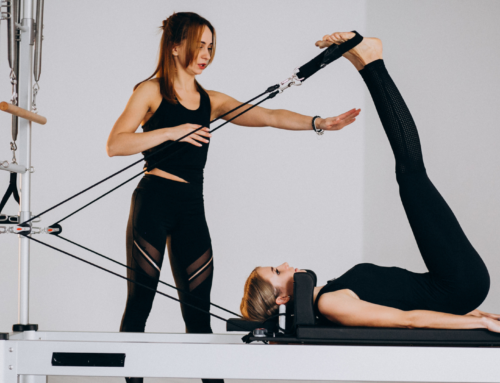I’m sure if you’ve had back pain before you’ve heard us physios say a million times that you need core strengthening to prevent this from happening again. The question is what’s the best way to strengthen them? It’s hard enough to choose between different kinds of exercises from HIIT workouts to bootcamp style to crossfit. And have you ever wondered what exactly does core strengthening mean? I mean, what exactly is the “core”?

What is core strengthening? & What is this “core” you speak of?
Joseph Pilates, the founder of Pilates exercises described the core as your body’s “powerhouse”. Basically it’s the muscles that hold your trunk stable while you do different movements with your limbs. The trunk muscles are made up of the abdominals or tummy muscles in the front and the muscles of the back. But it’s not as simple as that. There are 4 different tummy muscles, 1 of which sits very deep under the big muscle. There are also 2 very deep back muscles that sit under the big extensor muscles that you see on both sides of the spine. What forms the base of this core is the pelvic floor muscles. You know, the muscles that make you pee?and poo? Also there’s a very important muscle that is often forgotten when someone describes the core and it is the diaphragm. Yes! the main muscle that helps you breathe. So core strengthening means working on all these muscles. And there’s enough research in the medical field to prove how important these muscles are in preventing long term back pain. So let’s talk about how reformer pilates is the best way to do core strengthening.
Core strengthening doesn’t mean doing a 100 sit ups

So now that we know what our core muscles are, we can understand that just doing a 100 sit ups is not going to make them stronger. Sit ups don’t even work on the core entirely. With the way a lot of people do sit ups they are hardly doing any core strengthening. There are much deeper muscles that we need to work on to maintain our backs in good health. The best thing with reformer pilates is that your trunk is stable while the limbs do different movements. This focuses on the deep core muscles (remember the deep tummy and back muscles?) that are required to have a healthy back. All the movements on a reformer focus entirely on the core muscles. Although you may feel that you’re working on your arms or legs, your core muscles are constantly active.
Gym exercises don’t automatically mean core strengthening exercises

Quite the opposite in fact. I’ve seen quite a few body builders getting treated for back pain due to the hideous amount of weight that they lift for competitions. But having a 6 pack does not equate to having a strong core. You’ll be surprised to know how many of these body builders have a weak core and end up with back pain because they’re not using the right muscles. 6 packs are made in the kitchen not in the gym right? With reformer pilates you don’t have to focus on the repetitions as much as the focus on maintaing the arch in the back. By doing so you make sure that you’re constantly using the deep core muscles and not just the large muscles when doing movements.
Core strengthening doesn’t mean lifting as heavy as you can
Reformer pilates is all about slow and controlled. It doesn’t mean lifting as heavy as you can like in a gym. The challenge with pilates is to go slow and steady to get the best core strengthening workout. This means no impact for your joints! So it’s really great for someone who has chronic pain or low energy levels. You don’t have to do 20 repetitions. Just doing 5 or 6 controlled movements are enough to focus on your core muscles.






